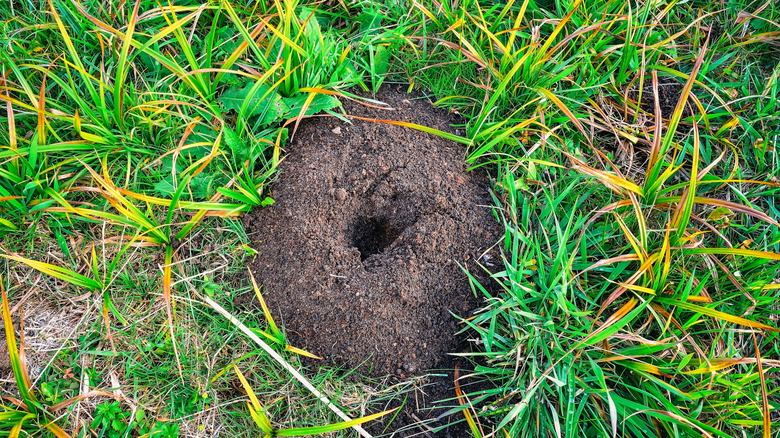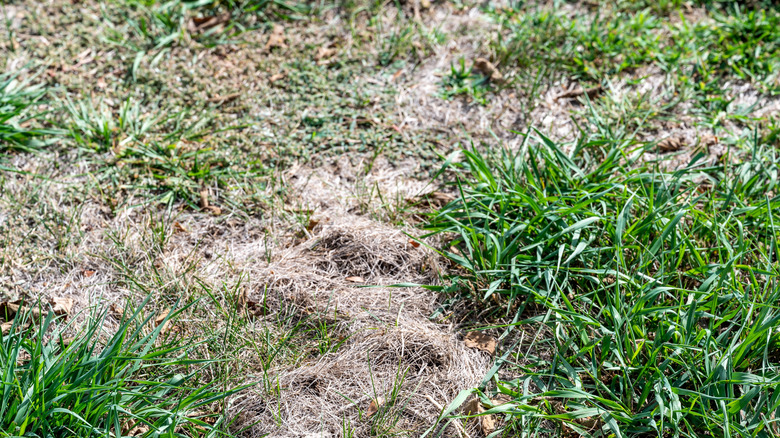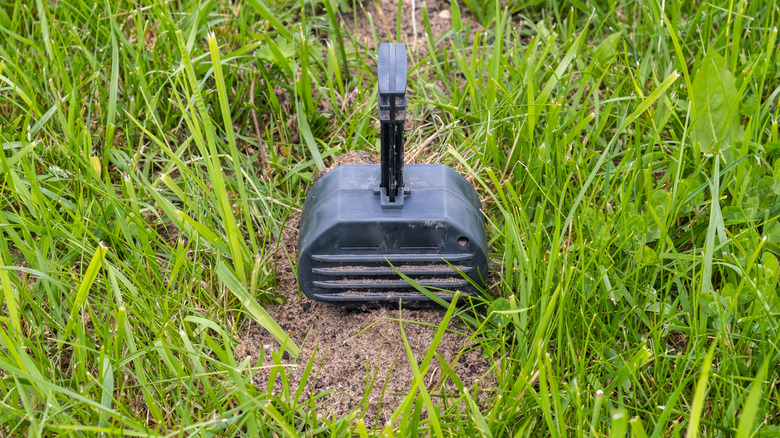Moles Vs Voles: How To Tell Which Pest Is Digging Holes In Your Yard
Nothing kills the joy of a morning walk faster than finding holes or random heaps of soil in the yard. And, unfortunately, what you're seeing on your lawn is just the tip of the iceberg. The real destruction is happening below the surface, where some uninvited critters, like moles or voles, are secretly busy wreaking havoc on the roots of your grass and plants. But how can you tell which pest is creating holes in your yard and what the holes in your yard really mean?
Well, there are tell-tale signs. If the mounds in your yard have a volcanic, rounded shape and the holes have raised ridges, it is most probably the work of moles. However, if the culprit is a vole, the holes will be smaller, about 1 inch across, and there will be shallow runways through the turf. Correct identification is important here, because moles and voles are different animals, and their management strategies are also different.
Moles vs voles: Tell-tale signs to look for
While both of these critters create holes, you'll need too pay attention to the details. Moles leave behind raised ridges under the sod. These ridges are actually their feeding tunnels. They are formed when moles move around below the ground and push the earth up just slightly. You might also spot cone-shaped mounds or small piles of excavated soil if there is a mole at work in your yard. If you press down on one of their tunnels and it springs back after 48 hours, it is very likely that the tunnel is being actively used. Moles are insectivores, so they won't eat your plants as they burrow.
Voles, on the other hand, tend to create narrow runways etched through the grass instead of raised, squishy ridges. And since they are herbivores, and they love to gnaw on vegetation, you will likely also see clipped stems and gnawed crowns of plants along their trails. Missing bulbs, small, irregular bite marks on plants, or grass eaten from the roots in the yard are all classic tell-tale vole activity signs.
The unsightly damage caused by moles can lead to weakened grass roots and a patchy turf if left untreated. Voles, by contrast kill plants, damage trees, and eat vegetables especially during winter when they have limited food supplies. In short, each of these critters can wreak havoc on your lawns and gardens.
Controlling and trapping these critters
Since moles are after insects and not plants in your yard, the best way to get rid of them is to reduce the grub population in your yard. However, their activity might still continue as they also eat earthworms. Therefore, sometimes the only solution you might have will be to trap them. The best time of the year to set traps is during spring and fall, when mole activity is highest. You can use a variety of lethal and non-lethal traps to catch or kill them. Place multiple traps to increase your odds. Keep in mind, the trapping method will only work if you set traps in active tunnels and not the temporary surface runs.
Voles thrive in dense-growing ground covers, so the first thing you want to do is reduce this hiding area by mowing grass short, removing weeds, clearing brush, leaf litter, and wood debris. To trap and kill these pests, experts recommend mouse traps baited with peanut butter. Place them strategically near their burrow entrances or along their feeding paths. It also helps to cover the traps with soil or cardboard, so the voles feel safer approaching them.
Lastly, there are also chemical control methods available for both moles and voles. Using these methods risks harming other critters in your yard.


